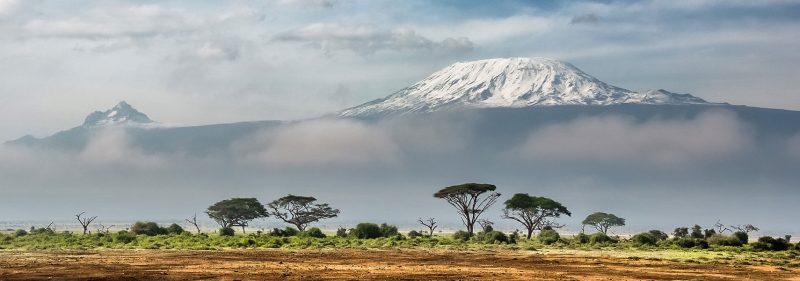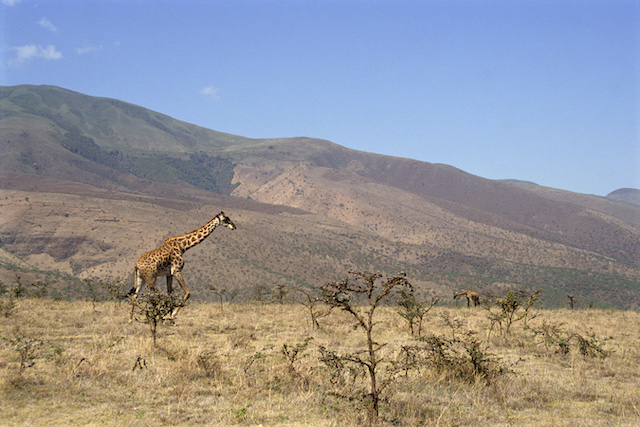Travel To Kenya To Enjoy Game Drives
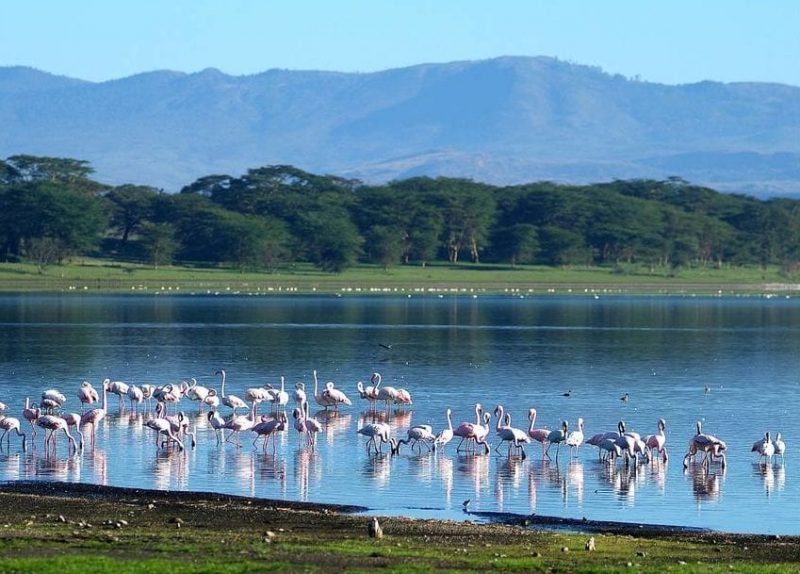
Game drives of Kenya
1) Naivasha
Game drives of Kenya must include a visit to Naivasha. It’s history embarks on a journey of fun facts and tales. It reveals the often charming culture and life of its past and present people. Setting foot in Naivasha unfolds the traces of its events. The population is about 158,680 as of 2009. Trade has slowly crept into this quaint little town. Hence, it is taking its toll resulting in green ruin. Transport to town can be either by road or air. The nearest airport is in Nakuru which is 63km from town.
Maasai abode
Game drives of Kenya. The area around Naivasha town was the 1st area that white people lived. It also was the hunting grounds used by the wild people of happy valley. In fact, Lord Delamare formerly owned the Delamere estates which surrounds the town. But long before the British lived there, it was part of an area that belonged to the Maasai tribe. It starts in South Sudan and ends in northern Kenya in the Lower Nile valley. They then moved southwards to Tanzania through rift valley. This ancient south-ward movement took place sometime during the 17th century A.D. Lake Naivasha has been very important to the Maasai tribe. They often moved towards it to water their cattle during droughts. But, they gave the land to the white settlers at the start of the 20th century. And the tribal people had no access to water. So, the tribal leaders fiercely opposed it in courts. They also struggled with other tribes that settled in the lowlands.
Lake Naivasha
To start with, the name of Naivasha was Nai’posha. It is a Maasai word meaning rough water. The word refers to the storms in Lake Naivasha or fading waters. It also refers to the many changes in the levels. It features the hydrology of Lake Naivasha. The name, therefore, is a British mix-up of the 1st name. It is a fresh water lake set in the south west of the town at an height of 1,884m and is at the highest lift of rift valley. It is about 100km from Nairobi at the foot of Mount Longonot. Some 10,000 years ago, it was part of a larger lake that held lakes Elementaita and Nakuru and flowed down rift valley towards the south. The lake is fed by Malewa and Gilgil rivers flowing down the Aberdare mountains. The water supply supports a vibrant green trade as well as many geothermal projects. The Lake Naivasha Riparian body started in 1934 manages the whole of Lake Naivasha. Oh, the game drives of Kenya.
Travel
Lake Naivasha has become a popular spot for people to come and enjoy the varied birdlife and tranquil area. Also, one can visit Crescent island and Hells gate park. Crescent island is a remote peninsula and game park in the lake shaped like a crescent moon where tourists can walk safely amongst gnus, zebras, impalas, giraffes and other wildlife, without the risk of being attacked by wild animals as there are none. Hippos are plenty along the shores of the lake. There are no crocodiles because the water is too cold for them at such a height.
Water supply
The main water source of Lake Naivasha is Aberdare mountains. Two rivers drain the mountain and feed the lake, Malewa and Gilgil rivers, which provides 90% of the flow. Ground water seepage along with water courses from the hilly slopes of Oldoinyo ridge is responsible for the influx of water. It extends from Mau cliff across the rift valley north of the lake. But, the lake has no seen outlet. A false school of thought is that there is a deep drainage system or an underground outflow. The game drives of Kenya take you through these streams of water.
Fish and bird
A healthy number of fishes including tilapia, crayfish and black bass exists in Lake Naivasha. Fishery trade makes about 75 tons on an yearly basis. Also, the lake attracts many birds such as great cormorants, long-tailed pelicans, fish eagles and kingfishers. The lake offers diverse land area not only for birds and fishes but also for many mammals.
Resourceful
The lake caters the water for farming for the most wide green trade. It is the 2nd largest foreign exchange earner in Kenya. You will get to see the flower shops with green houses during your game drives of Kenya. They use this lake water for watering them. The fragile and lively lake area also supports geothermal power group from stream jets.
Biodiversity threatened
The high number of people in Naivasha has encroached wetlands to convert them into farm lands, tourist hotels and housing areas. The trade movement including sewage effluent, filth and livestock feeding is really hostile to the lake’s biodiversity. The ongoing papyrus farming along the edges has destroyed the normal state of the lake. Current research shows that it cannot sustain further progress on a similar scale. No doubt, such changes in Naivasha has led to the advance and growth of the masses. For instance, it has halted poverty, improved work and gave decent life-styles to many people in town by giving birth to new jobs. But we will have to wait and see whether its input towards the farming trade will go on.
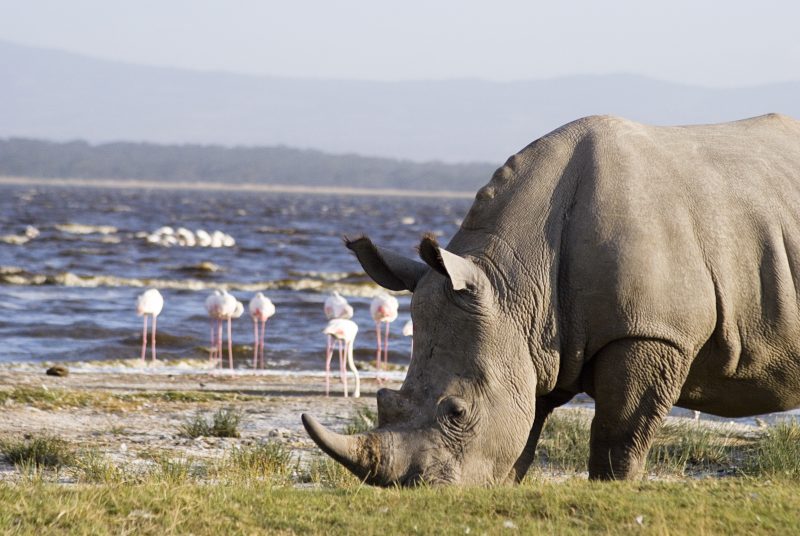
Game drives of Kenya
2) Nakuru
Game drives of Kenya. The history of Nakuru is as old as Kenya and its past reads like a story of human growth. There are many sites in Nakuru, which dates back many ages and have marks of early abodes. It is the oldest sites in the region. Maasai people have been in this region for many eons. The word Nakuru in the Maa language of Maasai means dust. Perhaps the name came from its vast land whose soil loosens during dry season. During the 19th century, the British started Nakuru city. It slowly grew as a stopover for Uganda railway linking to the coast of Kenya. Then, the town achieved its current status in 1904. Nakuru rises from the floor of East African rift valley. It is full of rolling terrain of acacia woodlands and euphorbia forest, the normal trait of the green in rift valley. Nakuru circles the park, the lake and its nearby lands. People can enjoy the varied lands and green diversity that ranges from ridges and cliffs. The place is ideal for a game drive, bird watching, picnic and hiking and is a 2½-hour drive from Nairobi. Hence, the powers to be saw a need to protect its precious green area and started Nakuru park.
Nakuru park
Nakuru park came into being in 1961, the year of Kenya’s freedom. At 1st, the park covered and secured only the lake. Slowly the park progressed over the years to include a larger land, mountains, good roads and great viewpoints over-looking the lake from Lion hill and Baboon cliff. The park became a buffer to reduce the ill impacts of farming and urban progress in the nearby catchment thereby saving it from settlement acts. It started in 1960 as a bird park and grew in 1968 to national park status.
Wildlife spotting
It is a must to visit the Nakuru park during your game drives of Kenya. Nakuru park is an ideal place for wildlife spotting as it offers a place for 56 species of native mammals and less often, the most obscure killer, leopards. It is the only place in Kenya to find Rothschild’s giraffe. Lions in the park are few compared to other places and are not so easy to spot. Baboons, that belongs to the genus Papio, are plenty in Lake Nakuru national park. They can be very fast and are often bold enough to come close and grab food from people. They are the African old-world monkeys. Baboons are native, or ground dwelling beasts often found in open land, woodlands and hills across the forest. Their diet includes insects and sometimes fish, shellfish, hares, velvet monkeys and birds.
Rhino park
Nakuru park started as a rhino park in 1983. The rhino stocking program received white rhinos from South Africa and other places. The white rhino feeds on grass. Its snout is like an able lawn cutter. It is very easy to spot a white rhino on the open plains of Lake Nakuru national park than in any other places. The tall fences protect them from poachers. Black rhinos, on the other hand, have finger-like lips that aids in feeding on bushes and trees. They hide their big body behind branches and leaves.
Lake Nakuru
Lake Nakuru is a shallow but large lake encased by grassland, woodland and marshes. There are some rocky outcrops as well as the largest forest on the eastern side. The lake now covers 188km2 of the area and lies south of central Kenya. It is in the eastern part of the great rift valley, which is 156km northwest of Nairobi in the district of Nakuru. The lake is part of the soda lakes of rift valley, which is a group of lakes that runs along eastern side of Africa. They are famous for the lives of 750 species of cichlid fish. Because the lake was only 2km away from town, hunters wreaked damage to the wildlife and settlers infringed upon the land. Hence, after the freedom of Kenya, it was fit to fence in the the lake and put in measures to stop hunters and settlers from crossing the secured areas. Today, this lake is a mere 27% of the park, and its sources of water are the 3 rivers; Njoro, Ender and Makalia rivers, as well as many springs. However, with the park growth and many caring efforts, the lake has since become one of the most called on wildlife spots in Kenya. Then, in 1990, it attained its Ramsar site status. And you will learn a lot more about this lake during your game drives of Kenya.
Rich area
Lake Nakuru is the most saline lake of great rift valley of Kenya. It supports a rich area and many water fauna and flora and is full of water mammals such as clawless otters. Then, a species of Tilapiagrahami came to the lake, which opened the way for the settling of many fish-eating birds. They consume around 5,000 fish on a daily basis. The fish are mostly around freshwater streams that feed the lake.
Cyanophyte spirulina platensis
Don’t forget to look for the blue-green cyanophyte spirulina platensis of Lake Nakuru during your game drives of Kenya. It consists of spiral-formed cells. To survive and regrow, it needs heat, high amount of carbon and phosphor as well as intense sunlight. Its huge growth makes the lake a soup of nutrients. At the peak of growth, it forms a biomass 20 times that of its neighbours. The reason for this is the constant supply of usual minerals. Hence, spirulina platensis is the source of nutrients for the lake.
Flamingos
It is a common sight to see flamingos foraging the streams of Lake Nakuru. The main reason these birds flock to the lakeshore is because of cyanophyte spirulina platensis, which is their main food source. There are up to 2 million lesser and greater flamingos in this lake. The sight of huge flocks of these birds along the lake shore seems like a mirage from a distance because of its mix of white feathers and fuchsia-coloured legs. In fact, at times, you can barely see the lake’s surface. The patterns of flamingo movement are quite cagey. Sometimes they depart at night on long journeys between the alkaline lakes that are along rift valley. So, it is never easy to predict at which lake they are at a given time. Flamingos never breed in the lake. They prefer Lake Bogoria or Lake Magadi as the best places to lay their eggs, which is in the south of Kenya.
Eat it like flamingo
Flamingos are very fond of eating tiny organisms. The bird often remains with its head in reversed position. Have a closer look at them during your game drives of Kenya. The upper beak acts as a shovel skimming the surface of the water. The lamellae inside the beak, which consists of fifty fine hairs per cm, filter the water inside its beak and holds back the food. The shape of the upper beak is triangle. It fits well into its lower beak. The tongue is quite thick and lies in a grove inside the beak and acts as a pumping piston. They suck water by pulling the tongue back. When it squeezes it outwards, the lamellae rises, holding back the food in the beak. In a non stop action, they will then transport the food further down the throat.
Bird park
Today, Nakuru park is a bird park with 450 species of birds, which includes massive flocks of other water birds. It makes the lake an ideal site for bird lovers. The number of birds fluctuates often and it depends on food status. So, before starting on a long game drive to view the birds it is a good idea to check with the park people. Also, carry a spotter’s guide to spot them and the many wildlife there.
Water life
Lake Nakuru is home to many water-loving beats such as warthog and impala. Another native animal is the waterbuck, often standing alone among trees or on the lakeshore. As the name suggests, waterbucks only dwell close to water. As you enjoy the game drives of Kenya, very often you will come across the northern part of the lake where lies a large herd of hippo area, making for fun game viewing. Another large beast found along the lake is buffalo. Females achieve a body weight of 750kg and males up to 800kg. It is the most feral beast, and the reason is its cunning and shrewd manner. It sometimes sneaks up behind people and attacks them. People often speak in awe about its huge power, and even after you shoot it in the heart, it can still run a long distance to attack before it collapses.
Climate
Around the lake, the climate ranges from hot and humid to cool. Annual rainfall is lower than many other areas of Kenya. The dampest months are March to May as well as October to December, but even during these times, it is never as rainy as other parts of the country.
Conservation
Lake Nakuru park is a secured area. But, its sustainability is still a far cry due to the ill human doings both from outside and within the area. The major threats is siltation due to the nearby farms. Filth from farming stuff like pesticides, herbicides and trade and home-based waste from town, enter this lake through surface inflows. The growth efforts and the tourists coming to the lake are further wreaking its green area. The lake started drying up from the year 1951 and since then it has dried up 4 times. The powers to be have been monitoring the level of soda dust since in 1953.
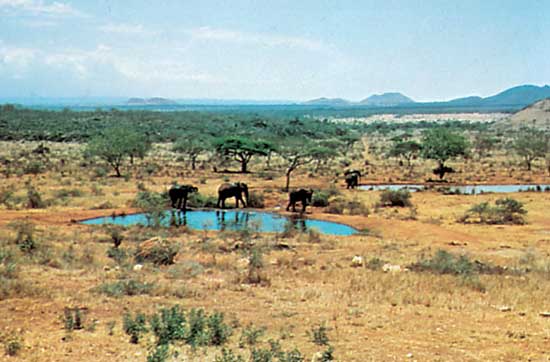 3) Tsavo
3) Tsavo
The game drives of Kenya. Long before the making of Tsavo park, a few explorers had ventured to get to the area. Two German priests, Rebmann and Krapf, were the earliest people to see Mts. Kenya and Kilimanjaro in the 1880s. Some years after Lord Lugard found the Galena/Sabaki river, Joseph Thompson arrived and cosied up to the Maasai and told the story to everyone.
Untouched
Known in the old days as Taru desert, Tsavo was an untouched scrubland. It was very hot and too arid for farming because a deadly fly infested it which precluded livestock rearing. The largely untouched area of Tsavo in the early days was a tangle of dense under growth in a semi-desert where there were man-eating lions. In 1898, two maneless male lions scared the area where the Kenya-Uganda railway building was going on. The lions used to drag the workers from their tents, despite the traps and thorn fences built to keep them out. These lions devoured 135 rail workers. It only came to an end when Lt. Colonel John Henry Patterson who was in charge of the laying of tracks, shot the lions in the end. Tsavo was home not only to human-eating lions but also to thousands of black rhinos and many killer snakes and stinging insects. The elephants were very risky when stumbled upon.
Creation of parks
Game drives of Kenya is never complete without knowing the history of Tsavo park. It was in the 1930’s that the concept of a park to preserve Kenya’s rare wildlife culture came into being. But the war years put it on hold. Later on, the 1st parks director Colonel Mervyn Cowie took up the mantle in 1939 when the war was over. But it was chief game warden Archie Ritchie who gave most to the parks’ success, which is the world’s finest. He said that parks must be free from rulers, divorced wholly from political handling and that a board of trustees from all walks of life should oversee it. Hence perhaps, the 2 people who created Kenya’s parks were Colonel Cowie and Archie Ritchie.
Start of the park
The British rule of Kenya journaled Tsavo west park as a wildlife refuge in 1949. It gave birth to the now famous Tsavo park, the largest park in Kenya. Journaling of the park was a lengthy process because they had to take into account the claims from all its local tribes. These were the Maasai, Orma, Wakamba, Taita, Duruma and Giriama. In the end, they only put aside a small chunk of land for wildlife to cater to the elephant and rhino, as well as Kenya’s local and at-risk species. It was not the best wildlife area in the country but the only big piece that was home to a huge numbers of elephant and rhino. Tsavo and Tiva rivers, Tsavo park is full of dry plains, acacia trees and baobab trees. Sited in the coast province of Kenya in the Taita-Taveta district near the town of Voi, Tsavo lies between Nairobi city and Mombasa.
First assistant wardens
In fact, the game drives of Kenya as we know it today would not come into being if it was not for the hard work and skill of the early wardens. On the 19th of April 1948, Peter Jenkins who was 18 years and Bill Woodley who was 19 years old took over Tsavo park. They were the 1st junior wardens after the park started in 1948. Jenkins and Woodley had just finished schooling at the Prince of Wales in Nairobi. By today’s standards, their salary was meagre with no tips. The 2 of them had served before in Nairobi park under Ken Beaton, its warden. In Tsavo, they worked under its first warden named Stevens, who had built a rustic base camp at Steve’s hill. Stevens had no early experience of camping or wildlife. He lived in an old tent into which a lion could walk in, which was too rusty a condition for him. Needless to say, before long, Stevens threw in the towel, leaving Bill Woodley, Peter Jenkins and their handful of raw workers in limbo. Ken Beaton was sent down to fight the fire. He employed yet another early warden.
Major David Sheldrick
Archie Ritchie himself headhunted David Sheldrick for the Tsavo task. David Sheldrick had served with honours in Burma and Abyssinia. At the time that the job of Tsavo warden came up, David was engaged in taking the Aga Khan to Dar es Salaam. Ritchie forced Cowie to wait for David’s return before posting the job for the warden of Tsavo, knowing that David would be perfect for it.
Tough days
The credit of changing the untouched terrain that Tsavo was to a famous wildlife tourist park that made it fit for safe game drives of Kenya goes to Kenya’s first set of wardens, David Sheldrick, Peter Jenkins and Bill Woodley. They were able rifle men skilled with shooting any beast and had fully served during the 2nd world war. The first task of these early park wardens was to walk on foot in harsh heat of the dry season. They carried with them what drinking water they could find. But during wet seasons, they ventured further, for they were hardened people, and drank from waterholes where animals drank too. They used tree roots and alum to remove these waterholes of mud and animal feces. There were no proper roads for Tsavo’s wardens to follow except for some narrow trails that wound through commiphora dominated thicket. They followed these trails in intense heat that seemed bent on draining every morsel of moisture from human bodies. There were no aircraft from which one can see the risks ahead and no hand-held radios to contact one another. All they had with them was a vehicle and some old tents that did not zip shut. Their workforce was a handful of raw people with only pangas and shovels to carve out the tracks. Today’s wildlife workers have no clue of the toil and sweat of these people who created a park of which the country could be proud. Their far sighted work and tireless efforts are worth recalling.
Tsavo east and Tsavo west
Following debates with the board of trustees and many district officers, Ken Beaton opted for the division of the giant Tsavo park into 2 smaller units, Tsavo east and Tsavo west, for ease of admin. It was split also because of the railway going from Mombasa to Nairobi. Today, Tsavo west and Tsavo east are split not only by the rail line but also by Nairobi-Mombasa highway. Little did the British rulers know when they were splitting and building Tsavo park that it would turn out into 1 of the most famous wildlife spots in the world. Both the west and east parks have their unique charm. While Tsavo west park is known for its most stunning scenic beauty, Tsavo east park is slightly larger and closer for a day visit. With any luck, with the measures put in place by the wildlife officers and the efforts of other people and well-wishers concerned, the numbers of elephant and rhino may be restored to former times.
Tsavo east park
Kenya lies across the equator. If you get a chance to visit the equator during your game drives of Kenya, you will be given a document to take home. Tsavo east park is a few degrees south. Sited southeast of Nairobi and northwest of Mombasa, Tsavo east park is flat. It has miles of dense scrubland undergrowth that had just an old hunting track that ended about 20 miles from Voi at a place called Heartbreak camp. Tsavo east park has dry plains across which River Galana flows. Apart from River Galana, the key spots include the Yatta plateau as well as many dams and pools used as watering holes by both animals and birds. The park’s closeness to tourist spots and beaches around Mombasa and Malindi makes it an ideal wildlife safari place for those who are looking for a one-day picnic. Also, Tsavo east is teeming with many Kenyan beasts like large herd of giraffes, gazelles, zebras and the Big Five – buffalo, elephant, rhino, lion and leopard. Not all of Tsavo east park is open to public because some areas are remote animal wild areas. But there is still an area for people to tour around and enjoy Kenyan wildlife.
Hurdles
David Sheldrick’s onus was to build the messy section east of the railway, now known as Tsavo east. Bill Woodley joined him as junior warden. After that, Peter Jenkins was also transferred to work under David Sheldrick in east Tsavo. Jenkins was charged with the task of running the northern area office at Ithumba and building tourist signboards and tracks, all of which he did very well and with extreme skill. He also grew the area and based himself there. Major David Sheldrick started east Tsavo’s 1st base at Ndololo by the Voi river. During that time, he only had some tents, people and a vehicle. He and his aide Bill Woodley explored their domain on foot from their base camp at Ndololo with rusty rifles slung over their shoulders. They did this with some porters to carry basic ration and a captured Miliangulu poacher as a guide. As David’s tasks grew, he faced and overcame many hurdles, after which followed a period of progress for the better and changes for the worse.
Moving quarters to the north
David Sheldrick toyed with the idea of establishing the head office at the nearest Mazinga hill in Voi town to get away from the sweltering heat. He was a visionary who was way ahead of our time when it comes to envisioning the famous game drives of Kenya. as we know it today. But it belonged to the sisal estate. Sheldrick negotiated with them to exchange the estate for a sisal growing patch on Voi river’s south bank. It was a long process that took a good two years. Finally, when the land exchange materialized, Mazinga hill was made available as the site for the permanent headquarters of Tsavo east. While building it, David set about recruiting rural people from the north because they were skilled at tracking and also hardened to harsh conditions. These tribesmen were from Samburu, Turkana, Rendile, Habra and Somali who were then trained by David along military lines, which thereafter served as a blueprint for all other parks.
Gaining access to the north
The only way to get to the park that lay north of the bank was through a long route. So, Woodley undertook foot patrols and almost died of thirst once when his automobile got stuck in the sand. By then the team managed to obtain from the authorities, additional equipment such as a tractor, a lorry and another assistant named Lawrence. The assistant warden supervised the mammoth task of the causeway construction across Galena in the 50’s, which took a year. Today, it makes the northern part accessible during dry seasons.
Fighting against animal poaching
Sheldrick recruited some wartime soldiers for his anti-poaching team. He used poachers as guides and trackers. The army supplied vital equipment such as radios, and the police airwing seconded a pilot and a plane. A prosecutor dealt with all cases, and CID officers dealt with the middlemen. Under the leadership of Peter Jenkins and Bill Woodley, 2 crack national park field forces and 2 game department units contributed too. The campaign thus stamped out poaching entirely within the boundaries of the national park. Not one elephant was poached. And that make the game drives of Kenya that much more bearable for the early colonists.
Drought and rains
The drought came about in 1960 and killed some 300 elephants. In the September of 1961, rains broke, triggering floods that transformed Malindi beach forever because the river became 300 yards wider. For some three months, David and the workforce got stuck on the river’s north bank. During this time, they ferried the supplies in a dingy attached to a cable.
Setting up the infrastructure
Then followed a decade of research, understanding and further development of the road systems and infrastructure to further facilitate the game drives of Kenya. David and his team completed the construction of five park entrance gates, as well as the Aruba self help lodge adjoining the Aruba dam. They also relieved pressure on Tsavo and Galana rivers during Tsavo’s dry seasons by building permanent water sources utilizing ground resources. All these spread the wildlife load equitably for tourism.
Wilderness tourism development
David Sheldrick constructed and designed an up-market game blind overlooking Tiva on Yatta plateau. The vastness of northern wilderness appealed to the more discerning and elite tourists. He envisaged that the northern wilderness is kept pristine and exclusive. Safaris into the north were conducted by professionals conversant with the bush and demanded two vehicles for safety reasons. A guide equipped with a radio to communicate with Voi headquarters for emergencies, accompanied the tourists.
Changes for the worse
After Kenya’s independence in 1963, Perez Olindo took over colonel Cowie’s position as director. Around this time, many political appointees with vested interests started appearing on the board of trustees. They were least bothered about the concept of developing the game drives of Kenya as a tourist attraction or overseeing the welfare of wildlife. White-collar corruption was becoming rampant, involving ivory and rhino horn. Poaching resurfaced again, involving high-ranking and politically protected ivory-dealing mediators. A period of change and transition was taking place. Meanwhile, elephants sought refuge in Tsavo. Grasslands replaced commiphora thickets throughout the southern section of the park. Fortunately, northern area remained the way it had always been with grazing species emerging south of Galana and buffaloes multiplying as a dominant grazer of grasslands.
Tsavo west park
The first headquarters of Tsavo west national park was within easy reach of Mtito Andei railhead on the slopes of Kamboyo that commanded breath-taking views of stunning landscape. The Chyulu range of hills on the northern part of the 3,000 square miles lies in this area. Just the magnificent scenery of Tsavo west national park warranted its national park status. Tsavo west is mountainous, scenically stunning and dotted with water holes. It overlooks lava flows, volcanic cones and Mzima springs’ crystal-clear waters bubbling from lava in the arid land. Tsavo west national park is swampy and wetter than its eastern counterpart. It harbours a range of mainly bull elephants, about which people knew little in the earlier days. It is also known for rhino, buffalo, leopard, hippo and lion as well as bird life. There are also smaller animals that can be spotted, such as hartebeest, bush baby, Maasai giraffe and lesser kudu.
Illegal poaching
In both the west and the east Tsavo national parks, elephant and rhino poaching remains the primary threat. Illegal poaching for ivory exacted a heavy toll on the elephants. Rhinos now exist only in safely fenced sanctuaries. In Asian countries, rhino horns are believed to have healing properties although they are made of the same material as fingernails. Hence, as long as horn and ivory demand persists in these countries, rhinos and elephants will continue to be annihilated.
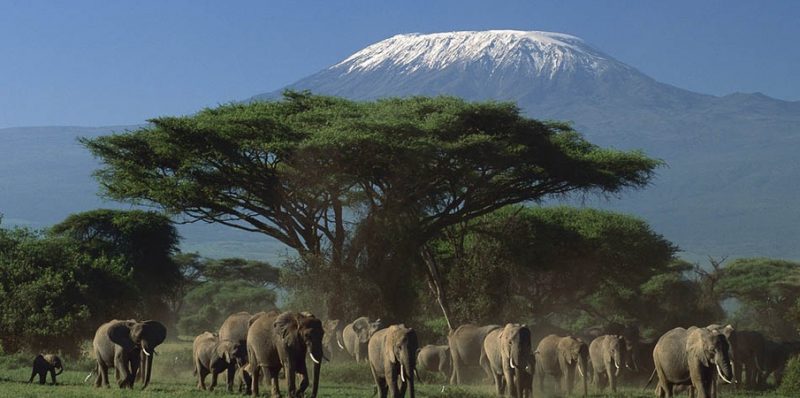 4) Amboseli
4) Amboseli
Game drives of Kenya. Amboseli lies on the border of two east African countries, Kenya and Tanzania, with a mixed topography consisting of seven habitats: acacia woodland, open plains, lava-rock-strewn thorn bush country, marshland, lake bed, slopes of Oldoinyo and swamp. At the turn of the 20th century, Amboseli used to be part of the southern Maasai reserve. Now it is managed as a separate reserve by Kenya wildlife service with the local community continually reclaiming its rightful ownership. To get to Amboseli from Nairobi, some people prefer to drive through the potholed roads. But for those who like a bit of luxury, there are scheduled flights departing from Nairobi. Chartered light aircraft can also land at the airstrips of Kilimanjaro buffalo lodge, Namanga or Empusel gate. The national park measuring 392km2 is what makes Amboseli famous and is its most prominent feature.
History
Amboseli has a history as ancient as human civilization itself. There is evidence that excavators discovered many fossils here. Although Kenya was gradually settled in over the first millennium AD by the Bantu people, it was the Maasais who established themselves in Amboseli. They were a Nilotic tribe but have amalgamated the customs of other tribes to form their culture. They named the region Empusel, which means salty and dusty open place in the Maa language. Maasais are fierce warriors, much like their ancestors, but live in peace with the wildlife. Hence, they were avoided by the European explorers initially until an expedition arrived in the region in 1883 led by Joseph Thompson. Thereafter, the colonial government set aside southern part of Amboseli for the Maasais and used the rest for agricultural purposes and developed it into a game reserve. So, Amboseli in the south of Kenya, as we know it today, was created in the 20th century by the colonial government as a place to relocate the Maasais so that rift valley would be exclusively allocated only for the British settlers. Then tourism started arriving during the 1940s. Soon the government considered the southern reserve not only for Maasais but also for the management of wildlife for tourism and hunting. The government installed some rangers and a warden in Amboseli to patrol for poaching because, by mid-1950s, poaching had risen to catastrophic proportions.
Amboseli national game reserve
An initiative for the preservation of wildlife in east Africa led to the national park ordinance in 1945, creating national parks and game reserves in Kenya. As a result, Amboseli became a national game reserve. But the Maasais cared less even though wildlife and tourist spots were off-limits to them. They saw no reason not to share the area with the others. Then there was the issue of the management of springs. Maasai used the watering areas around Amboseli’s swamps to water their herds. As a result, Maasai cattle had overgrazed the area, which exacerbated the conflict. So, a 30-acre sanctuary was formed to protect this water source.
Amboseli national park
Finally, 1974 marked a new beginning when little more than 10% around the swamp was declared as Amboseli national park by President Jomo Kenyatta by a decree. Although the designation helped protect fauna and flora, Maasais were once again infuriated because the status excluded them and their cattle. They seized on the opportunity with a vengeance. Numerous herds of cattle encroached well into the park unhindered, and the park staff could not keep them out. The Maasais then exterminated the park’s long-horned black rhinos. Finally, they obtained piped water for their cattle and only then did they consent to give up the land. Eventually, both parties found ways to reconcile each other’s needs.
Park boundaries
Amboseli national park is at the foot of the snow-capped Mount Kilimanjaro, Africa’s highest peak and the tallest free-standing mountain in the world. A safari game drive along the breathtaking backdrop of the mountain on the south of Amboseli offers a grand and unique view. The southern border of the park lies only 5km from the Tanzanian boundary, and the land beyond rises steadily toward Kilimanjaro. To the north, lies the Pleistocene lake basin that houses Lake Amboseli. The lake is surrounded by the park and remains dry during droughts and summers. Lava flowing from volcano creates the lake’s flat basin of alkaline soil covering 151 square miles. It is prone to seasonal flooding and broken in a few places by small extinct volcanic vents.
Weather
Amboseli region generously rewards any ardent lover of nature on a game drive to the park with an excellent combination of highland’s climate and tropical weather. The area is classified as semi-arid to dry savanna and hot since it lies on the northwest side. Drought is typical in this area. The maximum average temperature is 33°C, the minimum is 27°C and the total annual rainfall is 300mm, which is expected during the months of April and May as well as in November and December. The rainfall along with the melting snows of Mount Kilimanjaro percolate through the soil into a subterranean aquifer reemerging as a series of permanent swamps in the basin. Two such large swamps, Enkongo Narok and Longinye, transect the basin and the smaller ones are seen in the western and central parts of the park.
Wildlife
The swamps in Amboseli national park are the life-blood to over 400 species of birds and wildlife. Amboseli is famous for its large free-ranging African elephants, enormous herds of wildebeests and other animals including buffalo, impala, cheetah, giraffe, monkey, lion, zebra, antelope and hyena. There are also big and small birds. The diversity, along with the dry season, ensures marvelous viewing of large concentrations of these animals living in their natural habitat. Because of the park’s diverse wildlife, it is called the UNESCO Biosphere reserve. While on a safari, it is common to see both predators and prey living together harmoniously, for example, birds perched within easy reach of fat cats or gazelles grazing near lions. The truth is that wild animals only kill to eat. Rest of the time both prey and predators live peacefully.
Favorite safari park
Amboseli national park is the second most-visited and favorite wildlife safari park in Kenya after Maasai Mara. The park has been a famous game drive spot for tourists viewing wildlife at watering springs. It offers the best opportunity to see wildlife in their natural environment because its vegetation is sparse owing to long dry months. Flora and fauna abound in this piece of rich savanna grassland. The loose surface of road is covered with volcanic soil that is impassable in wet season and dusty in dry season. The park’s closeness to the Tanzanian border and Kenya’s capital Nairobi makes it a weekend getaway for most game enthusiasts and visitors alike. Amboseli national park has become not only a safari traveler’s dream come true but also a nature haven for photographers and fodder for documentaries. However, erosion of grasslands in Amboseli by circling safari vehicles did extensive damage during the 1980s to both animals and tourists. It turned the area into a vehicle-clogged dustbowl. As a result, the authorities initiated a program of environmental conservation including ditch-making and road-building. Strict measures were put in place to ward off off-road driving. Eventually, the combined effort did improve the situation enormously.
Conservation and local community
The Maasais settled beyond the park’s borders taking up agriculture and community involvement in conservation. Protection beyond the boundaries of the park has brought more financial benefit to the indigenous people. The conservation efforts have been able to mitigate human-wildlife conflict thereby bringing awareness to the local community. Several organizations such as African wildlife foundation, Noomayianat community development organization and Amboseli ecosystem trust today work on the conservation in Amboseli. For many years, the African wildlife foundation has been engaging through various development and preservation projects ranging from the protection of water sources to wildlife monitoring. The Noomayianat community development organization is a smaller organization that raise awareness among the local and Maasai community about the environment and educate them on how to work on food security through the efficient usage of water. The Amboseli ecosystem is an umbrella organization that brings together various stakeholders concerned to integrate the needs of herders with community development and conservation. They also coordinate with game scouts who patrol the area to deter poachers and mitigate conflicts.
Kajiado county council
On the eve of Kenya’s independence in 1961, the management of Amboseli national reserve was taken over by the Maasai district Kajiado county council. They managed the reserve and collected tourism revenue with the aim of supporting local development of schools, clinics and water sources. It gave the Maasai community a direct stake in the reserve’s administration. After that, for over a decade, power struggles between international conservationists, local and national politicians and the Kajiado County Council continued. Internationally, there was growing support for transforming the reserve into a national park. Offer to underwrite the costs of gazetting was made by New York zoological society, including installing water sites outside of the park for the Maasai livestock. But the destructive capacities of tourists and cattle in the 1960s began to tell. A rising water table in the 1970s produced poisonous alkali and decimated large acacia woodlands.
Kimana ranch sanctuary
In the 1990s, the Kimana ranch members group formed the Kimana sanctuary, a parcel of land with incredible wildlife diversity intending to have a community-based tourism facility that employed locals who supported conservation. The business side has since ended, but the ranch is still a protected space, minus the agriculture and cattle grazing.
Transfer of power
In 2005, the then President Mwai Kibaki announced his intention of transferring control of Amboseli national park to Olkejuedo county council from Kenya wildlife service so that the council could manage the park and its status would be restored back to a reserve. But it is still being contested at the time of writing this because of its implications that could sabotage Kenya’s other parks. Moreover, conservationists mounted a legal challenge against it and halted the action.
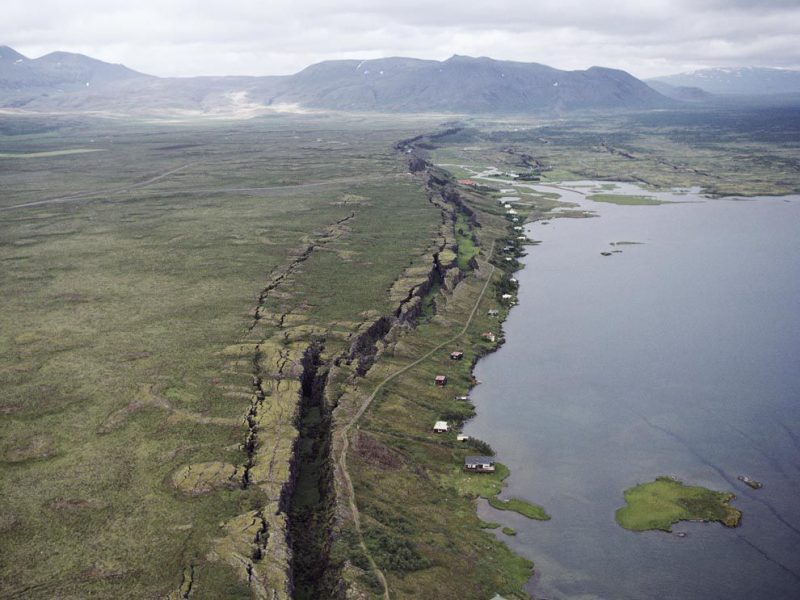 5) East African rift valley
5) East African rift valley
Game drives of Kenya. One of the world’s geologic wonders of the world is the East African rift valley system. It is also called the Afro-Arabian rift valley. It is the largest rift or fracture on the surface of the earth that has widened over time. Rift valley is a place where the tectonic forces of this planet have created new African plates by splitting the old continental crust apart in the same way it does with mid-ocean ridges. The rifting process that has given rise to the East African rift in Kenya is a situation similar to what happens in a continental setting. So, East African rift valley is a divergent boundary in a region of continental crust. It is one of the tectonic features not only of Kenya but also of Africa that extends thousands of kilometers from way down south in Mozambique through eastern Africa all the way up a few thousand kilometers north in Jordan in southwestern Asia.
Afar triple junction
On one side of the East African rift lies the larger Nubian tectonic plate and Arabian plate which makes up the continental crust of Africa. It passes through Ethiopia and Kenya. The smaller Somalian plate which lies on the other side includes the Horn of Africa and is pulling apart in the opposite direction. In fact, these plates are not only moving away from each other but also away northward. The place where the Nubian plate and the Somalian plate meets forms a junction in Ethiopia. It is formed by the plumes under the continent which initiate a bulge heating the crust and causing it to fracture and expand. The dominant fractures thus created occur in a pattern of fracture zones or three fractures radiating from a point with a 120 degrees’ separation. The point from which the branches radiate is known as Afar triple junction, which is in Ethiopia. It is located at the northern end and is part of the seismically and volcanically active portion of the system. It is one of the few places where plate divergence occurs as the continental crust is continually splitting apart to develop a new ocean. The Ethiopian rift is the oldest defined fracture in Ethiopia’s Afar region. A hot spot exists in Ethiopia which is exactly analogous to the rift in central Kenya. In fact, Kenya dome is the same plume of hotspot that gave rise to the Ethiopian rifting. Therefore, it is clear that the divisions are separated enough to give them different names but near enough to justify that they are genetically related.
Foundation of ocean basin
As the rift grows deep, it forms a zone consisting of continental and basaltic rocks which gradually drops below sea level. Further stretching leads to oceanic crust formation allowing ocean waters to flow in which produces a shallow, narrow sea within the rift. If the rift grows deeper and wider, it might eventually give birth to an ocean basin. Such is the case in the Gulf of Aden and the Red Sea. There the rifts are completely separated and have dropped below sea level.
Landscapes
Rift formation is not confined to the north. In fact, there is a series of them occurring further south as well extending into Tanzania and Kenya. The most striking and noticeable feature of these rifts are the numerous parallel and linear fault lines allied with the north-south axis caused by slip motion. They consist of the Nubian plate, the Somalian plate, the Ethiopian plate and the Arabian plate. The lined faults cut the main fault perpendicular at an acute angle. The shadows cast by the afternoon sun make the fault scarps appear very prominent. The vegetated area in East African rift system is the green floor that drains a region large enough for water to exist on the surface. It is 17 kilometers long. On the other hand, the rift is growing deeper in the north. It has also given rise to the Ethiopian rift.
Dual branches
East African rift valley system has paved the way to two branches – eastern rift valley and western rift valley. They divide Kenya north-to-south and enters Tanzania where it dies out. Lake Victoria is between these two branches. These fractures follow the old sutures between continental masses and the Tanzania craton. The continental masses are ancient that collided billions of years ago to form the African craton. The Tanzania craton is a small core of metamorphic rock that was too hard for it to go straight through. Instead, it diverged around it forming the two branches – east and west. The plateaus adjacent to the East African rift system slope upward toward the valley. They provide an average of 2,500 feet to the valley floor. It drops about 8,500 feet in Gikuyu and Mau escarpments. Both the eastern and western branches are grouped with Ethiopian rift to create East African rift system. Thus, what appears to be a whole rift is actually a sequence of related rift basins that create the distinctive topography and geology of East African rift valley.
Eastern rift valley
The eastern branch system is the main branch of the East African rift valley system and extends along the length of the rift system. The branch is in the north by the Gulf of Aqaba, the Dead sea and the Jordan river. It comprises of the main Ethiopian rift from Afar triple junction and continues along Red sea and Ethiopian Denakil plain towards south to lakes Naivasha, Rudolf and Magadi in Kenya along the Kenyan rift valley. It is less obvious in Tanzania, due to erosion in the eastern rim, but the rift continues southward through Mozambique plain and Shire river valley to the Indian Ocean coast. The eastern branch termed as Gregory rift or Kenya rift contains lakes. The east branch is arid, which can be seen in the salt-loving algae of the salty and shallow lake Magadi. A nearby lake to the north appears dark due to the depth. The white salt deposits of the lake floor host a few commercial salt pans. The lakes are where the secondary and main fault trends intersect.
Western rift valley
The western branch referred to as the Albertine rift or Lake Albert rift has several smaller structures known as grabens that are associated with large ones, for example Nyanza rift near Lake Victoria. The west branch of East African rift valley system forms an arc all the way from Uganda to Malawi. It extends northward from the northern part of lake Nyasa in an arc that includes lakes Rukwa, Kivu, Tanganyika, Edward and Albert. The lakes within the western rift valley are in-depth and fjord-like. The floors of some of these lakes are well below sea level.
Different characteristics
The western and eastern branches of the East African rift valley system have very different characteristics even though the same tectonic processes developed them. The west branch is characterized by deeper basins with large lakes and lots of sediment while what typifies the eastern branch are volcanic activity, active crevice formation and basalt eruptions.
Volcanic hazards
The stretching process results in tension causing the crust of East African rift valley to weaken. Hence, this system that has been forming for 30 million years is often associated and marked by individual and substantial volcanic activity. There is a variety of volcano types along East African rift system. They are usually on the fissures and edges along the parts of its length ranging from effusive basaltic fissure systems to large explosive silicic centers. Some geologists consider these eruptions as flood basalts because the lava that erupts along fractures runs over like water. The styles, frequency and magnitude of these volcanoes vary. The eruptions can cover vast areas of land and develop large thicknesses. Some of those volcanoes are large, producing such massifs as Mount Kenya and Mount Kilimanjaro. Deeply eroded slopes indicate that the volcanoes have been inactive for a long time, whereas the volcanoes that are on the faults are much younger than that. Some curious geologists have been investigating the creation and movement of past and current rift magmatism and active volcanism from the surface all the way to deep within the earth in the Afar depression and the Main Ethiopian rift.
Formation of East African rift valley
Most such phenomenon in the world is now under water and sediments and therefore hard to study directly. On the other hand, East African rift valley is an excellent laboratory to study an actively developing system. Geologists and scholars explore the formation of an ocean on land by directly observing the Ethiopian rift. However, the exact formation of East African rift valley is a debate that is on-going among geophysicists and geologists. Research and studies are still underway. The most current geological thinking is that the flow of heat from under the mantle is causing thermal swells in Ethiopia’s Afar region and central Kenya, which can be seen as highlands. As they form, they fracture the brittle outer crust forming the traditional graben structure. When a divergent boundary occurs underneath the thick continental plate, the force of the pull-apart is not powerful enough to create a single, clean break through the heavy plate material. Here the continental plate disintegrates into a rift-shaped structure, and as the plates pull apart, faults develop on either side of the rift. Consequently, the central valley floor sinks lower. In this rift forming process, rivers and streams flow into the sinking valley to form lakes. Thus, in Kenya, rift formation has led to many lakes above sea level at various locations within the region.
Human evolution
The unique geological setting called East African rift system is always high on the list of marvels to visit. It is ideal for volcanic studies and to understand how continents break apart. Equally significant is its contribution towards understanding the beginnings of human evolution. Many hominid fossils remain within the rift. Therefore, the development of East African rift valley has played a key role in understanding human development.
To receive a colourful digibook about game drive with videos, images and text, please fill out the following form or simply email us on safaris@safari-center.com

